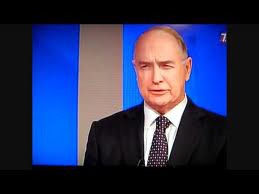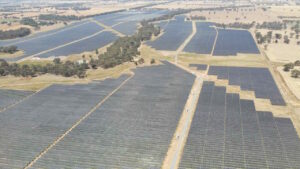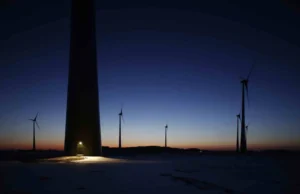Leading economist Ross Garnaut has delivered a critical appraisal of the federal government’s proposed National Energy Guarantee, warning that it will unlikely deliver lower prices or investment certainty, and could simply lock in the power of the big incumbent generators.
In a cautiously worded speech in Perth on Friday at Murdoch University, Garnaut echoed many of the concerns raised by other analysts who say the NEG risks pushing prices up rather than down, does not address emissions, and may be taking the wrong angle on reliability.
This – emissions, prices, reliability – is the so-called “trilemma” that the Coalition government says it is trying to solve, but Garnaut says that no policy will be taken seriously by the industry and markets until it addresses climate change and the Paris targets.
The Energy Security Board – which proposed the NEG in an eight-page letter designed to fill a policy hole created the abandonment of Finkel’s Clean Energy Target – has made “ending uncertainty” a major plus of it proposed NEG.
The ESB modelling will count on it, as it adds a crippling 3 per cent premium on the cost of finance for already inflated technology cost estimates wind and energy projects now, but will remove that risk premium if the NEG is agreed.
The ESB uses this to push the line that “something is better than nothing.”
But Garnaut says a NEG based on emissions reduction targets of just 26 per cent by 2030 – around half of what previous analysis says in needed to meet the long term Paris climate target – and no further reductions after that will not address the uncertainty.
“It is unrealistic to get consensus on anything that does not face up reality to our international responsibility on reduction of carbon emissions,” Garnaut said in his speech, titled “Australia as a superpower in the low carbon economy: A West Australian perspective after Finkel and Frydenberg”.
He also questions whether any price reductions predicted in the initial ESB letter of 8 pages were achievable as it did not address network prices or retail margins, and was likely to lock in the power of the big incumbent generators.
Other analysts have pointed to the fact the the proposed use of physical contracts to deliver reliability and emissions obligations would favour incumbents, and disadvantage new players, and merchant projects.
ITK analyst David Leitch notes that the share prices of the big three retailers had already jumped sharply on the prospect, and Garnaut noted that futures prices had also jumped, particularly in Victoria.
“There is a danger that a less liquid market would strengthen the oligopoly” that the recent reports by the ACCC and the Thwaites Review had said were such a major problem, Garnaut said. “The markets are not expecting the NEG to reduce prices.”
He is also concerned about the reliability obligation and the potential to conflate “flexible dispatchable” power with “baseload” – “particularly if large coal generation owned by big retailers is redefined as flexible, dispatchable power.”
Doing so, he said, would only reinforce the incumbents and their existing coal fleet. “There is a danger of entrenching the retail oligopoly,” Garnaut says. (Which would be ironic, given the Turnbull attack on the big gen-tailers a month or so ago).
Garnaut notes that the Australian Energy Market Operator’s reports to the government in September had been a “model of clarity and sound analysis”, that spoke of the need of short term capacity and “multiple markets” mechanisms to address different grid security needs.
It had also made a clear distinction between flexible dispatchable power and “traditional baseload” power of the kind that comes out of a coal generator.
But the NEG letter was ambiguous about what qualifies as dispatchable power – ageing and increasingly unreliable coal generators, or new faster technologies such as battery storage, demand response and pumped hydro.
Garnaut said he cannot see how the AEMO recommendations could be accommodated within the proposed obligations.
“There are a whole lot of grid services which are necessary (to the proper running of the network). If you try to bundle them into one instrument, you may not get the result you need.”
Garnaut recently announced, along with UK billionaire Sanjeev Gupta, a plan to build 1GW of solar PV, battery storage, pumped hydro and demand management to reduce prices at the Whyalla steelworks by around 40 per cent, and to provide flexible, dispatchable power to other consumers.
Garnaut also notes that while the ESB had argued that there is no carbon price, the structure of the proposed scheme meant that there was an implicit one, and the ESB had noted the ability of retailers to access international carbon markets to meet their obligations.
He said this is likely to be difficult. The UN Clean Development Mechanism was likely to be wound up in coming years, and other carbon markets like the EU, California and China were unlikely to allow Australia to access them in such a way.
Any use of Australian units , known as ACCUs and much it from the Direct Action program, would result in “double counting”, so was not a solution either.
Garnaut says all major analyses had found that adding more renewables to the grid would result in lower prices, but the ESB modelling showed little or no growth in large scale renewables over the coming decade.
He notes that Jennifer Westacott, the CEO of the Business Council of Australia, which represents the big utilities and which wants to help “broker” an agreement, can’t be described as “someone who is supportive” of renewables.
Garnaut notes that Westacott had noted recently the “irony” of the current rapid expansion of renewable energy in the renewable energy target (which the BCA had fought) as the most important way of reeucing pricing in short to medium term.
“There is nothing ironic about it,” Garnaut said. “It is what comes out of careful analysis.”
He added that Australia was continuing to “shoot itself in the foot” through its failure to integrate climate and energy policy.
“My suggestion is that we don’t try to bridge gap between people who think atmospheric physics have got it all wrong, and people who part of the commitment.”
Reports all the way back to the federal Treasury’s analysis in 2007 sowed that the least cost path to reach big emissions cuts is to seek reductions of 50 per cent in the electricity sector by 2030.
Garnaut repeated his previous suggestion that the government should legislate two targets – a weak one to satisfy the “vector of forces that determines outcomes in the Coalition party room” and a stronger target to meet the Paris targets.
The decision on which target to follow will then be judged on the ability of each to reduce prices. Garnaut is in no doubt that higher renewables will lead to bigger reductions.
Note: You can see the Garnaut presentation in full here, and note also that the ESB is holding a public “webinar” on the NEG this Friday. Sign up here.













